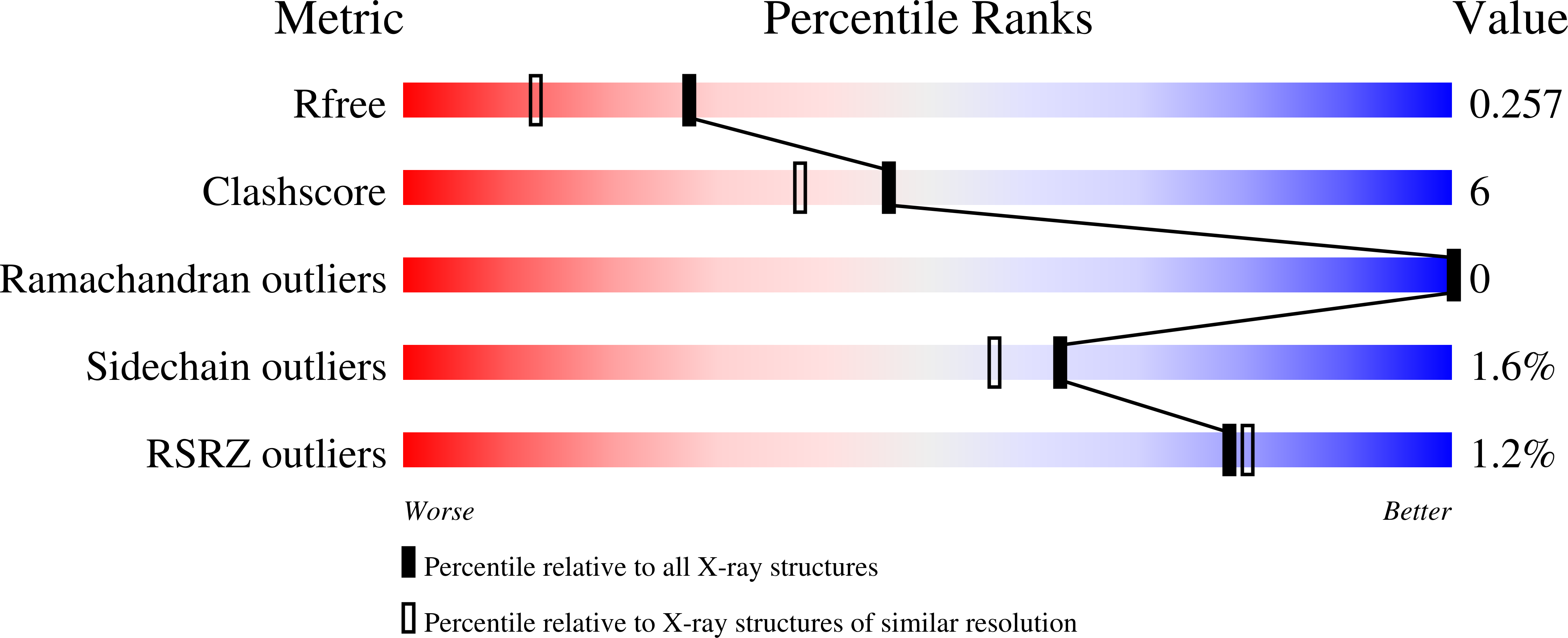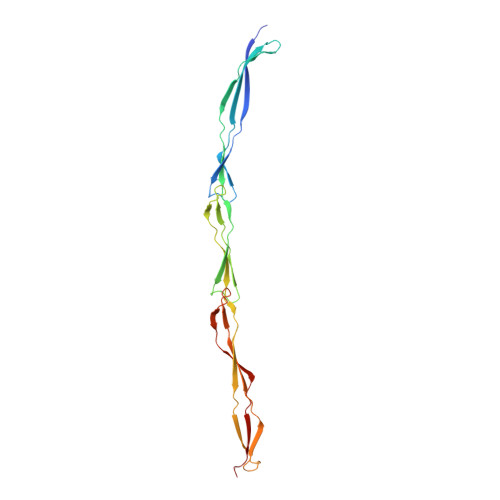Staphylococcal biofilm-forming protein has a contiguous rod-like structure.
Gruszka, D.T., Wojdyla, J.A., Bingham, R.J., Turkenburg, J.P., Manfield, I.W., Steward, A., Leech, A.P., Geoghegan, J.A., Foster, T.J., Clarke, J., Potts, J.R.(2012) Proc Natl Acad Sci U S A 109: E1011-E1018
- PubMed: 22493247
- DOI: https://doi.org/10.1073/pnas.1119456109
- Primary Citation of Related Structures:
3TIP, 3TIQ - PubMed Abstract:
Staphylococcus aureus and Staphylococcus epidermidis form communities (called biofilms) on inserted medical devices, leading to infections that affect many millions of patients worldwide and cause substantial morbidity and mortality. As biofilms are resistant to antibiotics, device removal is often required to resolve the infection. Thus, there is a need for new therapeutic strategies and molecular data that might assist their development. Surface proteins S. aureus surface protein G (SasG) and accumulation-associated protein (S. epidermidis) promote biofilm formation through their "B" regions. B regions contain tandemly arrayed G5 domains interspersed with approximately 50 residue sequences (herein called E) and have been proposed to mediate intercellular accumulation through Zn(2+)-mediated homodimerization. Although E regions are predicted to be unstructured, SasG and accumulation-associated protein form extended fibrils on the bacterial surface. Here we report structures of E-G5 and G5-E-G5 from SasG and biophysical characteristics of single and multidomain fragments. E sequences fold cooperatively and form interlocking interfaces with G5 domains in a head-to-tail fashion, resulting in a contiguous, elongated, monomeric structure. E and G5 domains lack a compact hydrophobic core, and yet G5 domain and multidomain constructs have thermodynamic stabilities only slightly lower than globular proteins of similar size. Zn(2+) does not cause SasG domains to form dimers. The work reveals a paradigm for formation of fibrils on the 100-nm scale and suggests that biofilm accumulation occurs through a mechanism distinct from the "zinc zipper." Finally, formation of two domains by each repeat (as in SasG) might reduce misfolding in proteins when the tandem arrangement of highly similar sequences is advantageous.
Organizational Affiliation:
Department of Biology, University of York, York YO10 5DD, United Kingdom.
















